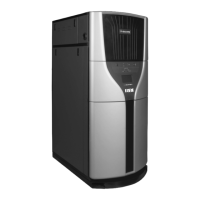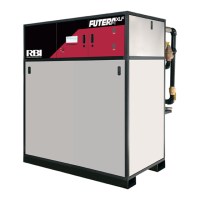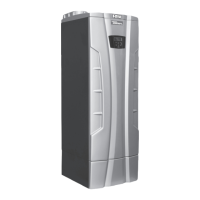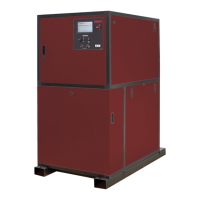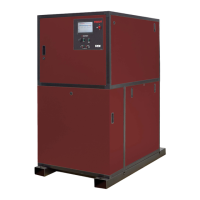OPTIONAL FEATURES HeatNet Control V3
Page 55
Method 5b can also be used in a hybrid mode on Member
boilers with a thermostat connected to the OR OVR input.
This will enable DHW heating, and be used instead of
having the 10k sensor’s temperature detect when DHW
heating is needed, but will use a selectable sensor instead
to maintain setpoint.
When the OR OVR input sees the thermostat close, the DHW
pump/valve will be engaged and remain energized as long as
the OR OVR input sees that the thermostat is closed. The
DHW setpoint along with the DHW heating band will then be
loaded. A steady temperature will now be maintained using
the HYB SENSOR setting in the DHW menu. This sensor
will control the water temperature at the sensor’s location,
enabling or disabling the boiler as needed until the OR OVR
input sees the thermostat open. Once the thermostat opens,
the DHW pump post purge will begin.
The difference between the settings of method 5a vs. method
5b is the “USE SENSOR” setting. 5a requires that the “USE
SENSOR” setting be set to YES, and the 5b “USE
SENSOR” setting be set to NO. The HYBRID SENSOR
setting must also be set in the 5b mode to the sensor where
temperature needs to be maintained. It must be set to OFF in
the 5a method.
Method 5a USE SENSOR = YES
HYB SENSOR = OFF
Method 5b USE SENSOR = NO
HYB SENSOR = SUPPLY, DHW,
RETURN
Each sensor selection/location has its advantages. Select the:
Supply sensor will limit the temperature/firing rate of the
boiler, but may not be sufficient for continuous demand or
speed in heating the tank. It is already available, so no
additional sensor is needed.
Return sensor will allow the boiler to run its supply
temperature up quickly, but may bounce off of the operating
limit band. This would heat the tank in the shortest time, but
may overheat the tank. It is already available, so no additional
sensor is needed.
DHW sensor will allow the placement anywhere needed to
maintain that locations temperature. This is an additional
sensor that needs to be acquired.
A thermostat can be placed in a tank and connected to the OR
OVR input. (On Member boilers only, The Master uses OR
OVR already with DHW METHOD 4), When the thermostat
contact closes across the input OR OVR (J12A .7 & .8) on a
Member boiler, the control will sense this closure and
disconnect itself from HeatNet.
DHW METHOD 6: DHW using Direct
Control
If the control’s SETTINGS: 4-20 mA input is set to
PRIORITY = HIGH the 4-20 mA signal, once brought above
the 4-20 mA starting current can be used to override any other
Heat Demand and direct modulate the boiler.
This can be set in menu: ADVANCED SETUP: 4-20 mA
INPUT. It allows a member boiler to be taken offline and
directly modulated by an external control.
If the Master is using it for heating and the ADVANCED
SETUP: 4-20 mA is set to PRIORITY= HIGH, an external
control can now output a 4-20 mA signal which will take over
the boiler’s fire rate and override all other heating demand
inputs. The external control would also need to open any
valves or turn on pumps. This is typically used for DHW
Control.
DHW Maximum Runtime
When a Combination system has a call for DHW heat and
services it for a time that is longer then designed, the DHW
may need to be locked out or held off for a predetermined
amount of time (retry).
Two settings are provided to control this situation: the
Maximum Runtime, and the Holdoff Time. The Maximum
Runtime is set to allow the DHW call to occur for the design
time of the system. If for some reason this time is exceeded,
the Holdoff Time setting goes into effect. The Holdoff time
can be set to a Lockout (the OR OVR input needs to toggle or
a power cycle to clear the Lockout), or a fixed amount of
boiler off time. If the fixed amount of Holdoff time is
selected, the DHW functionality will be cycled between the
boilers running for the Maximum Runtime, and stopped for
the duration of the Holdoff Time.
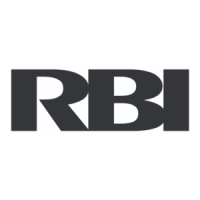
